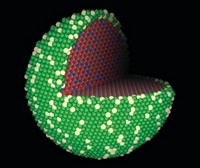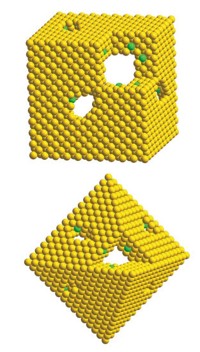Advertisement
Grab your lab coat. Let's get started
Welcome!
Welcome!
Create an account below to get 6 C&EN articles per month, receive newsletters and more - all free.
It seems this is your first time logging in online. Please enter the following information to continue.
As an ACS member you automatically get access to this site. All we need is few more details to create your reading experience.
Not you? Sign in with a different account.
Not you? Sign in with a different account.
ERROR 1
ERROR 1
ERROR 2
ERROR 2
ERROR 2
ERROR 2
ERROR 2
Password and Confirm password must match.
If you have an ACS member number, please enter it here so we can link this account to your membership. (optional)
ERROR 2
ACS values your privacy. By submitting your information, you are gaining access to C&EN and subscribing to our weekly newsletter. We use the information you provide to make your reading experience better, and we will never sell your data to third party members.
Materials
Alloy Catalyst Beats Pure Platinum
November 5, 2007
| A version of this story appeared in
Volume 85, Issue 45
Chemical engineers at the University of Houston have developed a new type of platinum-alloy catalyst that's four to five times better at reducing oxygen than platinum alone (Angew. Chem. Int. Ed., DOI: 10.1002/anie.200703331). The finding could be a boon to fuel cells that rely on the O2-reducing reaction. The catalyst, in the form of nanoparticles made up of a copper-cobalt-platinum alloy, has the highest reported activity for O2 reduction in a polymer electrolyte membrane fuel cell, according to Peter Strasser, who led the research effort. The catalyst's active phase is formed in situ (shown: Cu = red, Co = blue, Pt = gray). When current is applied to the electrode, some of the copper and cobalt selectively dissolve out of the alloy and migrate into the polymer membrane. A platinum-rich shell is left behind to catalyze the reaction. Strasser thinks that the bump in catalytic activity comes from the structural characteristics of the nanoparticle surface, where the distances between platinum atoms are shortened, thanks to stabilization from the alloy core.






Join the conversation
Contact the reporter
Submit a Letter to the Editor for publication
Engage with us on Twitter